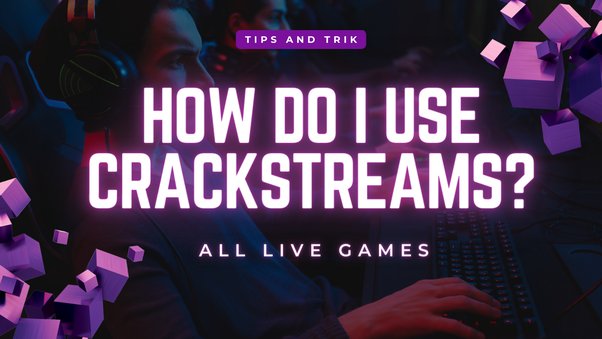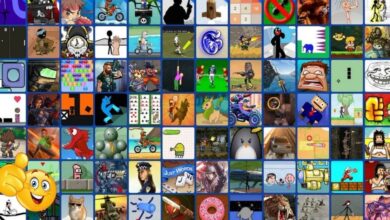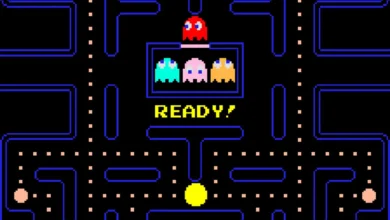Unveiling the World of Crack Stream: Everything You Need to Know

Introduction
In the ever-evolving landscape of digital entertainment, crack stream has emerged as a contentious yet undeniably popular phenomenon. It refers to the unauthorized streaming of premium content, ranging from movies and TV shows to live sports events, made available to users without proper licensing or permissions. The allure of crack stream lies in its promise of free access to otherwise subscription-based or pay-per-view content, attracting millions of users worldwide. However, beneath the surface of convenience and cost savings lies a complex web of legal, ethical, and technological implications.
Understanding Crack Stream
Crack stream, in its simplest form, involves the distribution of copyrighted material over the internet without the consent of the content creators or rights holders. This practice traces its roots back to the early days of online piracy when file-sharing services like Napster revolutionized how digital content was consumed. Over time, as streaming technology advanced and internet speeds improved, crack stream platforms proliferated, offering users a vast array of content at the click of a button.
Legal and Ethical Implications
The legality of crack stream is a hotly debated topic, with proponents arguing for the democratization of content and opponents decrying the loss of revenue for artists and media companies. From a legal standpoint, crack stream clearly violates copyright laws in most jurisdictions, as it involves the unauthorized reproduction and distribution of protected works. This has led to numerous legal battles between rights holders and crack stream operators, resulting in the shutdown of some platforms and hefty fines for others.
How Crack Stream Works
Technically speaking, crack stream operates on a peer-to-peer (P2P) sharing model, where users upload and download content directly from each other rather than from a central server. This decentralized approach makes it challenging for authorities to track and shut down crack stream platforms, as they often operate under the radar or in jurisdictions with lax enforcement of copyright laws. Additionally, crack stream platforms typically use encryption and other measures to obfuscate their activities, further complicating efforts to combat piracy.
Advantages of Crack Stream
One of the primary appeals of crack stream is its accessibility and affordability. For users who may not have the means to pay for multiple streaming subscriptions or purchase individual content, crack stream offers a way to access their favorite movies, TV shows, and sports events without breaking the bank. This democratization of content consumption has democratized access to entertainment, allowing individuals from all walks of life to enjoy cultural and artistic works that would otherwise be out of reach.
Disadvantages of Crack Stream
However, the convenience of crack stream comes with significant drawbacks, both for users and for the broader entertainment ecosystem. For starters, crack stream platforms are often rife with malware, viruses, and other cybersecurity threats, posing risks to unsuspecting users who may inadvertently expose themselves to harm. Furthermore, the quality and reliability of crack stream services can vary widely, with users frequently encountering buffering, lag, and other technical issues that detract from the viewing experience.
Impact on Content Creators
Perhaps the most significant impact of crack stream is felt by content creators and rights holders, who stand to lose billions of dollars in revenue each year due to piracy. When users opt to stream content illegally rather than paying for legitimate access, it deprives artists, filmmakers, musicians, and other creatives of the financial compensation they deserve for their work. This loss of revenue not only undermines the economic viability of the entertainment industry but also stifles innovation and creativity by disincentivizing investment in new projects.
Crack Stream and Cybersecurity
In addition to its economic impact, crack stream also poses significant cybersecurity risks for users. Because crack stream platforms operate outside the bounds of legal and regulatory oversight, they are often breeding grounds for malicious actors seeking to exploit vulnerabilities in users’ systems. From phishing scams and identity theft to ransomware attacks and botnet infections, the dangers of crack stream extend far beyond copyright infringement, making it imperative for users to exercise caution when accessing pirated content.
Crack Stream Alternatives
Fortunately, there are legitimate alternatives to crack stream that allow users to access high-quality content legally and ethically. From mainstream streaming services like Netflix, Hulu, and Disney+ to free platforms supported by ads or sponsorships, such as YouTube and Crackle, there are plenty of options available for consumers seeking affordable entertainment options. By supporting these legal alternatives, users can ensure that content creators receive fair compensation for their work while also enjoying a safe and reliable viewing experience.
Global Perspectives on Crack Stream
The legality and enforcement of crack stream vary significantly from one country to another, reflecting cultural attitudes towards piracy and the role of government in regulating online activities. In some jurisdictions, crack stream may be tolerated or even tacitly endorsed as a form of civil disobedience against perceived injustices in the entertainment industry. In others, however, crack stream is treated as a serious crime punishable by hefty fines, jail time, or both, sending a clear message that piracy will not be tolerated.
Crack Stream and the Future of Entertainment
Looking ahead, the future of crack stream and its impact on the entertainment industry remain uncertain. On one hand, technological advancements such as blockchain and decentralized streaming protocols hold the promise of creating new, more secure distribution models that empower artists and consumers alike. On the other hand, the proliferation of crack stream and other forms of piracy threatens to undermine the economic viability of the entertainment industry, potentially leading to a decline in quality and diversity of content over time.
Case Studies
To illustrate the real-world implications of crack stream, let’s examine a few notable case studies that highlight the challenges faced by rights holders, law enforcement agencies, and consumers alike. One such example is the crackdown on the popular crack stream platform Megaupload, which was shut down by the US Department of Justice in 2012 for copyright infringement and other charges. Despite its demise, Megaupload left a lasting impact on the piracy landscape, prompting a wave of copycat sites and legal battles that continue to this day.
Social and Economic Impacts
The social and economic impacts of crack stream are far-reaching and multifaceted, affecting everyone from individual users to entire industries. Economically, crack stream deprives content creators of the revenue they need to sustain their livelihoods and reinvest in new projects, ultimately stifling innovation and creativity. Socially, crack stream normalizes the idea that digital content should be free and accessible to all, undermining the value of artistic expression and cultural diversity in the process.
The Role of Government and Industry
In response to the proliferation of crack stream and other forms of piracy, governments and industry stakeholders have implemented various measures to combat the problem. These include legislative efforts to strengthen copyright laws and enforcement mechanisms, as well as collaborative initiatives between rights holders, internet service providers, and law enforcement agencies. While these efforts have had some success in deterring piracy, the cat-and-mouse game between pirates and authorities continues unabated, highlighting the need for a multifaceted approach to the problem.
Consumer Behavior and Crack Stream
At the heart of the crack stream phenomenon lies consumer behavior, with millions of users worldwide opting to stream pirated content rather than pay for legitimate access. Understanding the motivations behind this behavior is crucial for developing effective strategies to combat piracy and promote ethical consumption of digital content. From financial constraints and convenience to a sense of entitlement and disregard for copyright laws, the reasons why people choose crack stream vary widely and are influenced by a multitude of factors.



